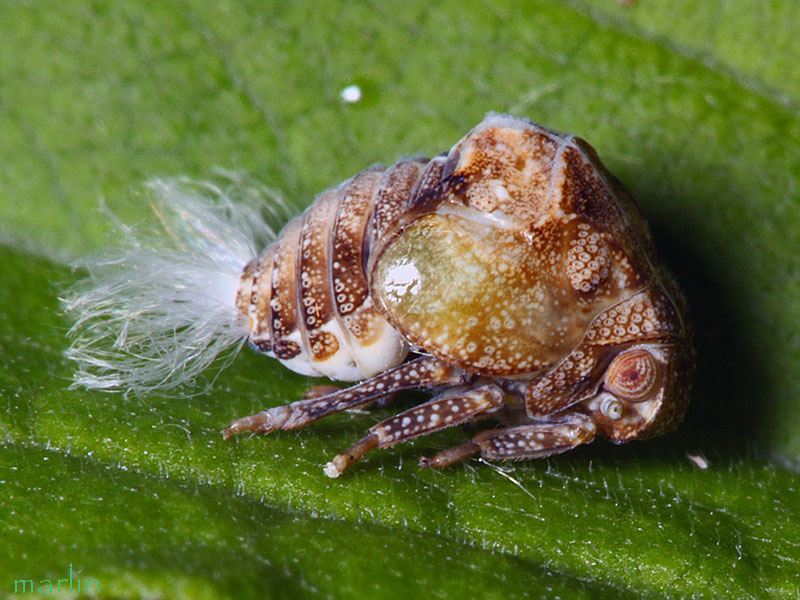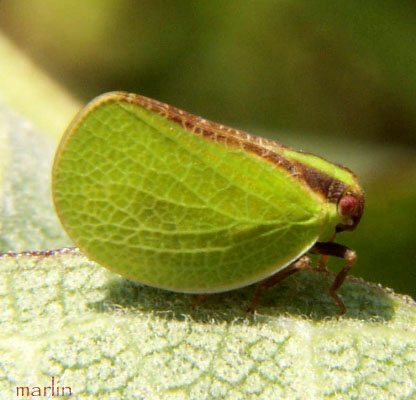Order Hemiptera / Suborder Auchenorrhyncha / Family Acanaloniidae
Live adult & nymph planthopper photographed at DuPage County, Illinois. Adult Size: 7mm

Many acanolonid nymphs secrete a filamentous wax extruded from glandular tissue at the tip of the abdomen and various other areas according to species. The wax provides protection from predators and prevents desiccation. The waxy coating also protects the insects from spider webs or puddles; they don’t stick to spider webs and they float quite well and can swim to safety. [1]
Nymphs of the planthopper Ormenaria rufifascia create effective barriers to ants and larva of lady beetles by wiping their wax onto the plants they inhabit; insects which come in contact with the wax are contaminated topically, and consequently compelled to engage in extensive preening to rid themselves of the substance. Meanwhile, adults and nymphs escape by leaping away. [2]

Although their exquisite camouflage seldom fails, planthoppers use a combination of powerful jumping legs and highly-efficient flying wings to rocket themselves out of reach of predators.
References
- Thomas Eisner, Maria Eisner, and Melody Siegler, Secret Weapons: Defenses of Insects, Spiders, Scorpions, and Other Many-Legged Creatures (Belknap Press, 2005).
- Bugguide.net, Family Acanaloniidae – Acanaloniid Planthoppers
Order Hemiptera: True Bugs number almost 5,000 species in North America, and 40,000 worldwide. They have mouthparts formed into a beak, adapted for sucking plant juices or the liquefied insides of their animal prey.
Suborder Auchenorrhyncha – Cicadas & Planthoppers
Suborder Sternorrhyncha – Aphids, scales, mealybugs, jumping plant lice
